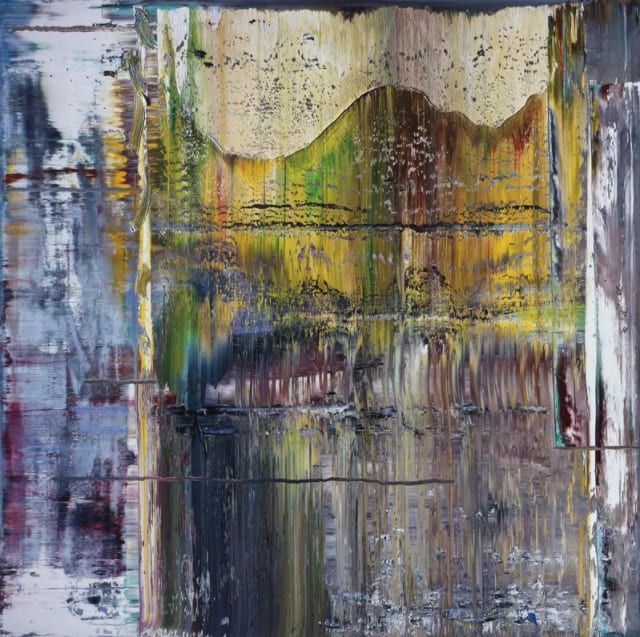Gerhard Richter DE, b. 1932
P2 Haggadah, 2014
Chromogenic print mounted on aluminium
Accompanied by a certificate of authenticity
Accompanied by a certificate of authenticity
100 x 100 cm
© Gerhard Richter
Gerhard Richter's 'Haggadah (P2)' (2014) relates to his 2006 painting of the same name. It invites viewers to a closer examination beyond its surface to uncover the depth within its...
Gerhard Richter's 'Haggadah (P2)' (2014) relates to his 2006 painting of the same name. It invites viewers to a closer examination beyond its surface to uncover the depth within its complex, shifting layers. The title refers to the Jewish Passover narrative text, suggesting a connection to religious and cultural traditions.
Richter's 'Haggadah (P2) technique reflects his signature style of blending abstraction and representation. The artwork is characterised by tantalising and exciting passages, showcasing Richter's mastery of creating dynamic textures and layers of interplays. This approach is reminiscent of his Cage Paintings series, where he employs meticulous scraping and paint application to conceal and reveal the colour's layers.
The significance of 'Haggadah (P2)' within Richter's oeuvre lies in its embodiment of his ongoing exploration of the boundaries between the tangible, the abstract, and the representational. It exemplifies Richter's ability to challenge traditional notions of painting, particularly in postwar Europe and the conceptual shifts of the 1960s.
'Haggadah (P2)' emerges from Richter's diverse artistic journey, which spans both East and West Germany and reflects his engagement with various artistic movements and techniques. The artwork is a testament to Richter's enduring impact on contemporary art, blending historical traditions with modern artistic expression.
Richter's 'Haggadah (P2) technique reflects his signature style of blending abstraction and representation. The artwork is characterised by tantalising and exciting passages, showcasing Richter's mastery of creating dynamic textures and layers of interplays. This approach is reminiscent of his Cage Paintings series, where he employs meticulous scraping and paint application to conceal and reveal the colour's layers.
The significance of 'Haggadah (P2)' within Richter's oeuvre lies in its embodiment of his ongoing exploration of the boundaries between the tangible, the abstract, and the representational. It exemplifies Richter's ability to challenge traditional notions of painting, particularly in postwar Europe and the conceptual shifts of the 1960s.
'Haggadah (P2)' emerges from Richter's diverse artistic journey, which spans both East and West Germany and reflects his engagement with various artistic movements and techniques. The artwork is a testament to Richter's enduring impact on contemporary art, blending historical traditions with modern artistic expression.
